|
New spectrometer method analyses substances on
surfaces of any kind
A new and simple method of adapting a mass spectrometer enables it to
analyse substances on any surface, including living tissue, rapidly and with
no special sample preparation. 28 September
European Directive on radiation exposure will
ban MRI scans
European Directive aimed at minimising exposure to radiation will prevent
the use of MRI scanners, according to Professor Dag Rune Olsen of the the
Norwegian Radiation Hospital, Oslo. 27 September
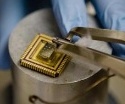 Crospon licenses drug-delivery system based on HP inkjet
printer technology Crospon licenses drug-delivery system based on HP inkjet
printer technology
The technology which is based on an inkjet printer head, enables painless, controlled release of one or
more drugs in a single patch applied to the skin. 28 September 2007
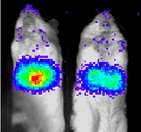 Glowing
mice illuminate diabetes Glowing
mice illuminate diabetes
Mice given a customised firefly gene that causes their livers to glow in the
presence of key chemicals formed during glucose metabolism could help the
development of new diabetes drugs. 26 September
Elekta launches compact linear accelerator
Elekta has unveiled the Elekta Compact, a linear accelerators with a single
low-energy photon beam and a small footprint, designed for use in a small
treatment room and in specialized markets. 26 September
IMAGNA to develop therapeutic vaccine against cat
fibrosarcoma
The IMAGNA consortium is to study the usefulness of therapeutic tumour
vaccination by magnetofection technology in a clinical study in cats with
fibrosarcoma. Preliminary results indicate significant reduction in tumour
relapse rates. 24 September
Xograph to distribute Mindray ultrasound equipment
in UK
Xograph Healthcare has signed a distribution agreement with Shenzen-based
Mindray for the supply of ultrasound equipment in the UK. 24 September
Viking Systems expands in Central Europe
Viking Systems has expanded its distribution network for its laparoscopic
vision systems in central Europe by signing up a new partner, Biomedica
Medizinprodukte of Austria. 24 September
Laser scan of veins detects cancer
Technology that can detect tumour cells by scanning surface veins with a
laser, eliminating the need for drawing blood, has been developed by Purdue
University researchers. 20 September
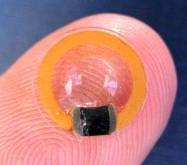 Pressure
sensor for the eye Pressure
sensor for the eye
A sensor developed by researchers at the Fraunhofer Institute for
Microelectric Circuits and Systems IMS can monitor pressure in the
eye, aiding the treatment of glaucoma. It also has potential to monitor
blood pressure and incontinence. 20 September
US study to determine if imaging can detect
subclinical cardiovascular disease
One of the most challenging aspects of cardiovascular imaging is going to be
how to detect subclinical atherothrombosis disease in order to address
earlier management. The High Risk Plaque (HRP) study will approach this
challenge clinically and economically with a multimodality approach. 18
September
New guidelines for treatment of arterial
hypertension
The European Society of Cardiology (ESC) and the European Society of
Hypertension (ESH) have revised their 2003 guidelines. In 2000, 26% (972
million) of the adult population worldwide had hypertension. Identifying
specific patients at risk of developing organ damage will allow better
deployment of preventative healthcare resources. 18 September
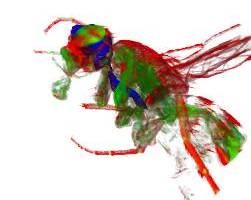 Fruit
fly imaging aids research into Alzheimer's Fruit
fly imaging aids research into Alzheimer's
Scientists at the UK Medical Research Council (MRC) have developed optical
imaging technology that can generate 3D internal images of the fruit fly for
the first time. Due to the similarity between fly and human genes, the
technique could help to speed up genetic research into Alzheimer’s and other
human diseases that affect brain cells. 18 September
1.5 million unnecessary child deaths from
diarrhoea
Diarrhoea is still one of the most common reasons for the high child
mortality rates in many low and middle-income countries despite two decades
of global efforts to control it. One fifth of all the deaths amongst
children under the age of five that are reported every year are caused by
serious diarrhoea. 17 September
Salzburg
hospital migrates 600,000 patient data files to Agfa's Orbis
Agfa HealthCare has announced that it has successfully installed its Orbis
hospital information system together with its Impax picture archiving and
communications system in the Salzburger Landeskliniken in Austria. 17
September
Finland's Nexstim gains €8m investment for
brain diagnostics technology
Nexstim Ltd develops revolutionary brain diagnostics and therapy
technology. The new equity investment will allow Nexstim to
accelerate its international sales and marketing activities, and
expand its customer base. 13 September
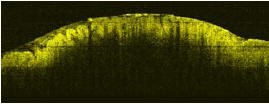 Successful
trial of optical imaging of tissue during cancer surgery Successful
trial of optical imaging of tissue during cancer surgery
The tests, performed on cancerous and precancerous human oesophagus and
lymph node tissue, were designed to establish the potential for MDL’s
optical imaging technology to revolutionise cancer surgery. 13 September
 Mobiles
phones dangerous near hospital beds Mobiles
phones dangerous near hospital beds
Mobile phones should come no closer than one metre to hospital beds and
equipment, according to research published in Critical Care.
Hazardous incidents caused by phones varied from a total switch off and
restart of mechanical ventilator and complete stops without alarms in
syringe pumps to incorrect pulsing by an external pacemaker. 12 September im3D's CAD-Colon diagnostic system deployed in
hospitals across Italy
im3D Medical Imaging Lab, a research centre based in Torino, Italy has
installed its diagnostic system in thirteen healthcare facilities. It is
being used to support medical specialists in the early diagnosis and
prevention of colorectal tumours. 12 September
Philips and Chinese Institute of Health
Sciences join forces in molecular medicine
Royal Philips Electronics and the Institute of Health Sciences have
announced an agreement to establish a joint research laboratory to conduct
advanced research in the field of molecular medicine. 12 September
Diabetes combined with heart disease a growing
problem in Europe
Recent large surveys of patients with heart failure have shown that diabetes
in such patients was also present in 30-40% of cases. This combination of
disorders worsens the long-term health risks for patients and complicates
the management of those with acute and chronic heart failure. 12 September Novel cell culture technique shows tumours
selectively uptake nanoparticles
A novel cell-culture technique devised by scientists at The University of
Nottingham has shown that nanoparticles can deliver drugs selectively to
brain tumour cells. 12 September Spanish
Hospital orders low-radiation mammography units from Sectra
The order comprises four Sectra MicroDose mammography units and
breast-imaging PACS, for managing and archiving digital breast images. 11
September
Groundbreaking treatments at new London centre
for cardiovascular MR
Great Ormond Street Hospital, London, has recently opened its new Centre for
Cardiovascular MR with two Magnetom Avanto MRI scanners and an
interventional cardiac catheterisation laboratory from Siemens Medical
Solutions. 11 September
High intensity ultrasound could seal punctured lungs
High-intensity ultrasound beams are focussed on the wound on the lung. This
creates a hot spot about the size and shape of a grain of rice. The
ultrasound heats the blood cells until they form a seal. 10 September
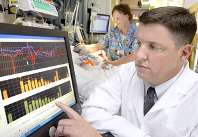 Automated blood-flow monitoring may help prevent brain damage. Researchers from the Johns Hopkins Children’s Center
in the US and Cambridge University in England have designed a system to
track potentially dangerous changes in blood flow to the brain in real time.
It shows promise for preventing brain damage and death in children with head
injuries. 10 September Automated blood-flow monitoring may help prevent brain damage. Researchers from the Johns Hopkins Children’s Center
in the US and Cambridge University in England have designed a system to
track potentially dangerous changes in blood flow to the brain in real time.
It shows promise for preventing brain damage and death in children with head
injuries. 10 September
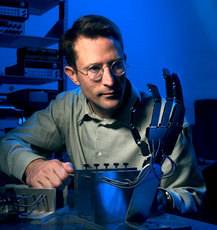 Steam-powered rocket motor drives prosthetic arm Steam-powered rocket motor drives prosthetic arm
A team at Vanderbilt University has developed a
prosthetic arm powered by a miniaturised shuttle rocket motor that produces
10 times the power of current commercially-available arms.
7 September
New technique allows scans of
babies' brains with infrared light
An improved technique that uses infrared light to scan the brain using a
head cap will enable infants to be scanned for studying brain development or
for assessing brain injury. 7 September
Study identifies toxic by-products of nanotechnology
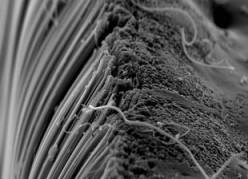 In a warning to the emerging nanotechnology industry, a new
study of the by-products discharged to the environment during production of
carbon nanotubes (CNTs) has identified cancer-causing compounds, air
pollutants, and other substances of concern. In a warning to the emerging nanotechnology industry, a new
study of the by-products discharged to the environment during production of
carbon nanotubes (CNTs) has identified cancer-causing compounds, air
pollutants, and other substances of concern.
4 Sept 2007
Barmer evaluates benefits of personal health
record
Germany’s largest health insurance provider, has started evaluating the effects of the personal health
record (PHR) on patient health behaviour and on healthcare delivery in a Germany-wide research study.
4 September
AngioDynamics launches scalable electrode for
radio frequency ablation in surgery
The RITA UniBlate is a scalable, single-needle radiofrequency ablation
electrode used to coagulate lesions during percutaneous, laparoscopic, and
intraoperative surgical procedures. 4 September
August |
July |
June | May
|
April | March
| February | January
To top
|








 In a warning to the emerging nanotechnology industry, a new
study of the by-products discharged to the environment during production of
carbon nanotubes (CNTs) has identified cancer-causing compounds, air
pollutants, and other substances of concern.
In a warning to the emerging nanotechnology industry, a new
study of the by-products discharged to the environment during production of
carbon nanotubes (CNTs) has identified cancer-causing compounds, air
pollutants, and other substances of concern.